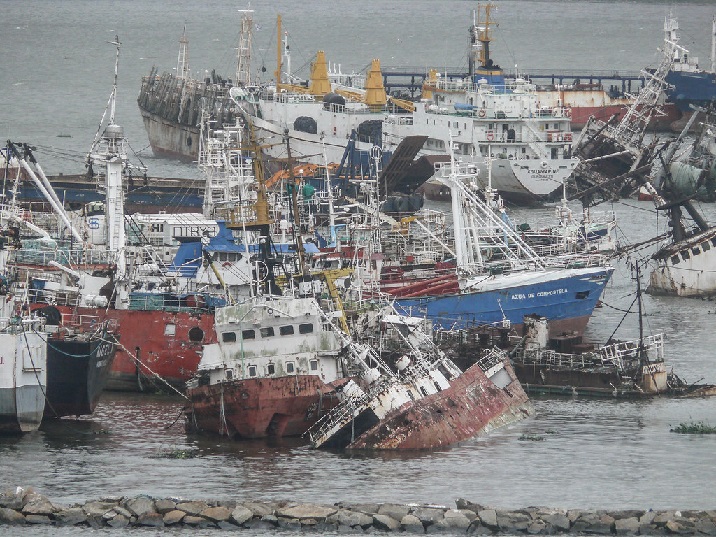Here's Why the Boat Graveyard Isn't Gone
Sunk costs, and denial of obligation.
Eve Whitner, Senior Writer | December 20, 2010

As unfortunate as it may be, the boat graveyard has become as much of a staple of our city as Medhall's central offices or the Rig. It's a massive, hideous wreck of rusty metal that covers a quarter of our bay, and can be seen from anywhere on the shoreline. It's ugly, dangerous, fifteen years old, and we're no closer to getting rid of it than when it first sunk into our fine bay. Why? The answer is a little complicated
To get into the politics of the boat graveyard, we need to talk about who actually owns it. Or rather, who's supposed to own it. Originally, these boats were owned and operated by Maersk, the shipping company responsible for a majority of Europe-United States freight transfer. When sea shipping was first closed, the ships needed a location to dock, and Brockton Bay was chosen. They made a large-scale bid with the Mayor's office, ousting local shipping companies from their docks in exchange for flat rate repayment. That is, the original owners had no rights to their dockyard, and had a little bit of money thrown at them to piss off. Obviously, they weren't happy with this.
A group of dockworkers from these Brockton-based shipping companies decided to protest by locking in the ships with their own. They brought in freighters, parking them outside each of the lanes until they received what they considered fair compensation for the disruption to their sites. Both parties were still operating under the assumption that shipping would eventually return, so tensions grew- and the police were called. During the riots, two ships were sunk, completely blocking exit lanes from the shipyard. Compound that with Maersk's declaration of bankruptcy in 1997, and the ships were just left there.
A ship is declared abandoned when it has been left at mooring for more than 60 days since the last full payment. The docks themselves are still property of the Brockton Dockworker's Association, so they would be within their legal rights to dispose of them, but... how? A standard cargo ship is roughly the size of an apartment building. There are thirty-two ships in the graveyard, and the DWA is a shell of its former self, barely scraping along.
One other option is an intervention by state authority- The boat graveyard could reasonably be classified as a public safety hazard and qualify for a funded cleanup project, but there's no real incentive. Nobody lives there, barely anyone works there, and there are more pressing things for them to worry about. Any governor who put plans to clean up the graveyard into motion would instantly become a pariah, sinking untold millions into a project that fixes nothing and protects nobody.
Until there's some quick and easy way to get rid of it, it's not going to go. It'll sit there, getting more dangerous and less viable by the day. And even if it was cleaned up, then what? It isn't like shipping's coming back, it would at best be a place for the boardwalks to extend to, and at worst more territory for the gangs to squabble over. It's been here for a while, and it doesn't look like it's going anywhere.
